Team: Dallas Stars
Team Building Status: Contending
The Dallas Stars look like a serious contender this season. Contributions from veterans and youngsters make them an interesting team from a long term planning perspective as well. How long can the Stars remain a contender?
Roster Ruminations
NHL Roster
After a trip to the Stanley Cup Final during the bubble season and missing the playoffs the following season, the Stars transformed their roster to be centered around a new group of emerging stars. Jamie Benn, Tyler Seguin and Co. transitioned from centerpieces to the supporting cast, while a younger group led by Jason Robertson, Roope Hintz, and Miro Heiskanen took over the leading roles.
The results have been excellent as Dallas quickly returned as a contender. With another group of young players pushing their way into NHL lineup, they are well positioned for a long playoff run this spring. Their balanced contributions from players at different stages of their careers has the Stars looking like a contender again next season as well. (Keep in mind that UFAs are stripped from the rosters for the 2024-2025 team profiles.)
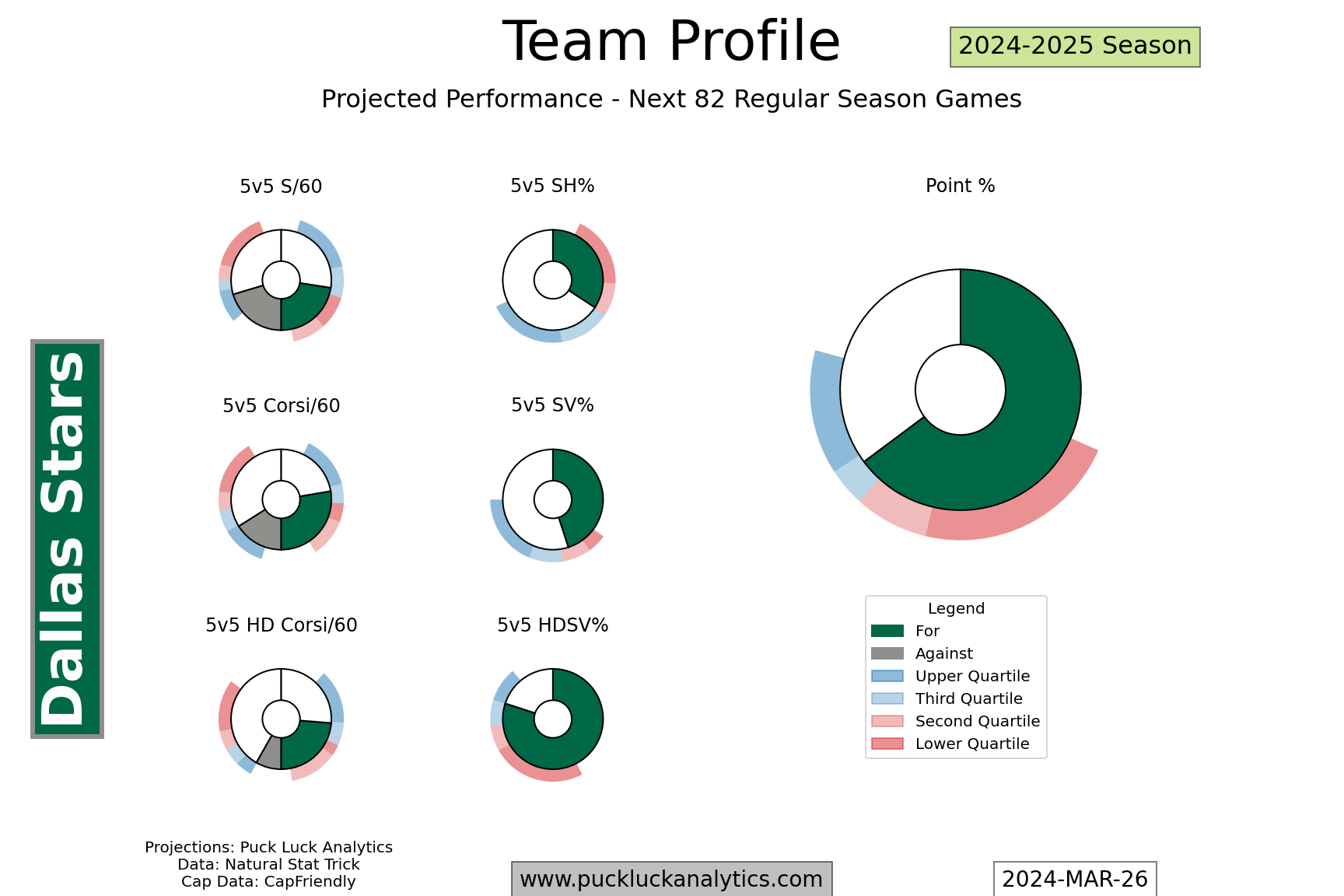
Salary Cap Management
The Stars have managed to keep their cap sheet quite clean while they’ve built their contending roster. They have two of their three cornerstones locked up long term in Roope Hintz and Miro Heiskanen, while Jason Robertson has a couple of season left on his bridge deal. They’ve also avoided eating into their cap space with buyouts or other cap penalties, so they have the maximum possible cap space to work with.
For 2024-2025, they have just over 80% of their cap space committed for 16 players. Thomas Harley is the most notable RFA they’ll have to deal with in the summer so they should have some space left to fill in the holes created by their UFAs.
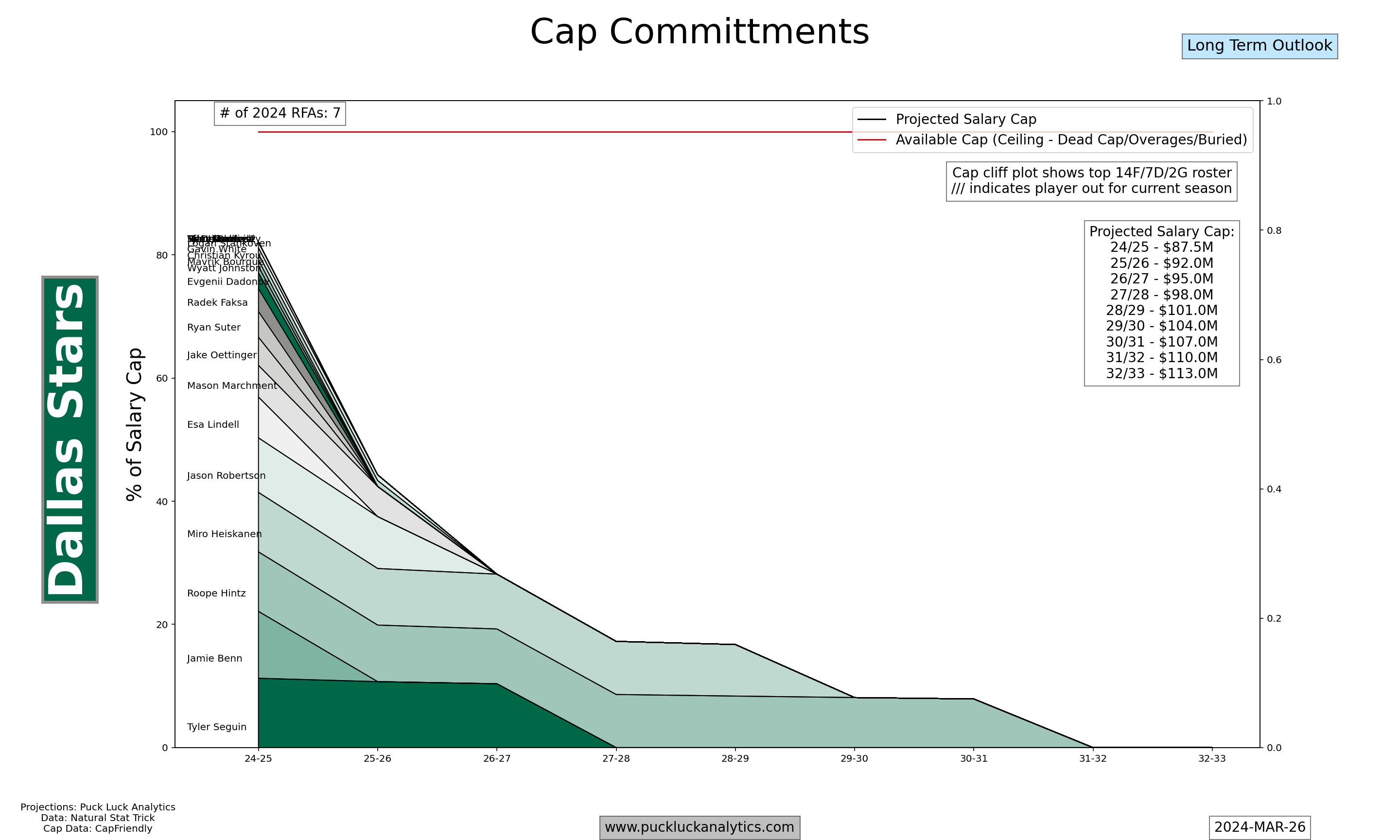
Future Assets
The Stars have used future draft capital to help bolster their current contending roster, which has left their pool of draft picks a bit below baseline for the upcoming three drafts. Their prospect pipeline is relatively well stocked though and Hockey Prospecting ranks Dallas as the 12th best prospect pool in the league.
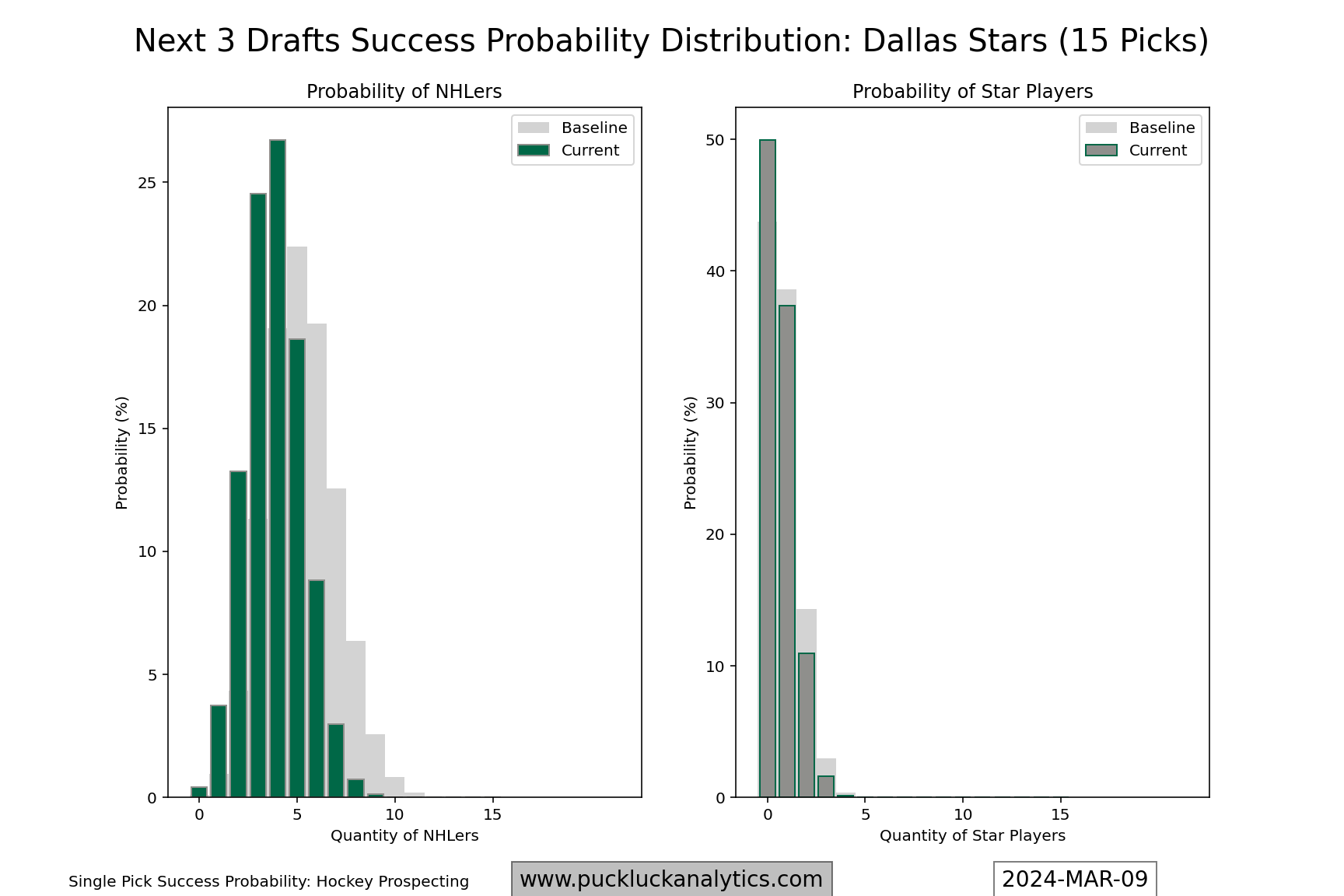
What’s Next?
The Stars current roster gives us a pretty good look at what a regenerative roster built around different focus cohorts can look like. If we break up the Stars’ current roster into cohorts of 4 year age groups, we get the following (with Joe Pavelski and Ryan Suter as 39 year old rogues):
| Centers | Wingers | Defensemen | Goalies |
| Tyler Seguin | Jamie Benn | Chris Tanev | |
| Matt Duchene | Craig Smith | ||
| Evgeni Dadonov |
| Centers | Wingers | Defensemen | Goalies |
| Radek Faksa | Mason Marchment | Esa Lindell | Scott Wedgewood |
| Joni Hakanpaa | |||
| Centers | Wingers | Defensemen | Goalies |
| Roope Hintz | Jason Robertson | Miro Heiskanen | Jake Oettinger |
| Sam Steel | |||
| Centers | Wingers | Defensemen | Goalies |
| Wyatt Johnston | Ty Dellandrea | Thomas Harley | |
| Mavrik Bourque | Logan Stankoven | Nils Lundkvist | |
| Christian Kyrou |
The Stars run to the 2020 Stanley Cup Final revolved around the eldest cohort here, with Jamie Benn and Tyler Seguin leading the way. Rather than continue to rely on that group as it aged though, the Stars shifted their focus to younger players following that run and the former leading actors have settled into support roles while much of the rest of the previous core is long gone. The ‘Bennaisance’ of 2022-2023 didn’t happen because Jamie Benn was still leading the way in his 30s, it came about a result of Benn being slotted in lower in the lineup in a more suitable role for his current skillset. The Stars have added to this group in recent transactions with players like Matt Duchene and Chris Tanev, but it’s been done to fill needs at reasonable cost and they’ve avoided long term commitments to players on the downhill side of their NHL playing careers.
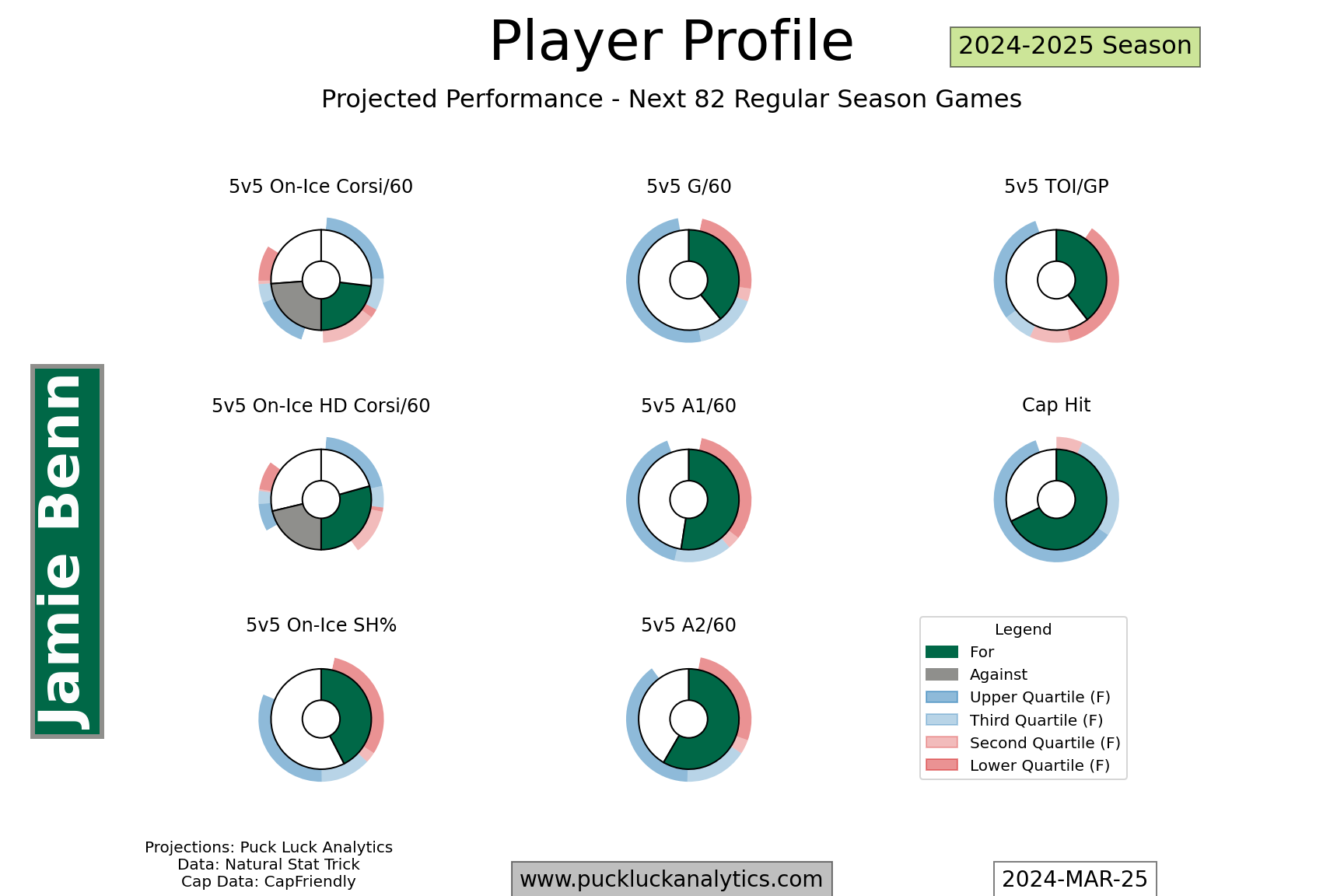
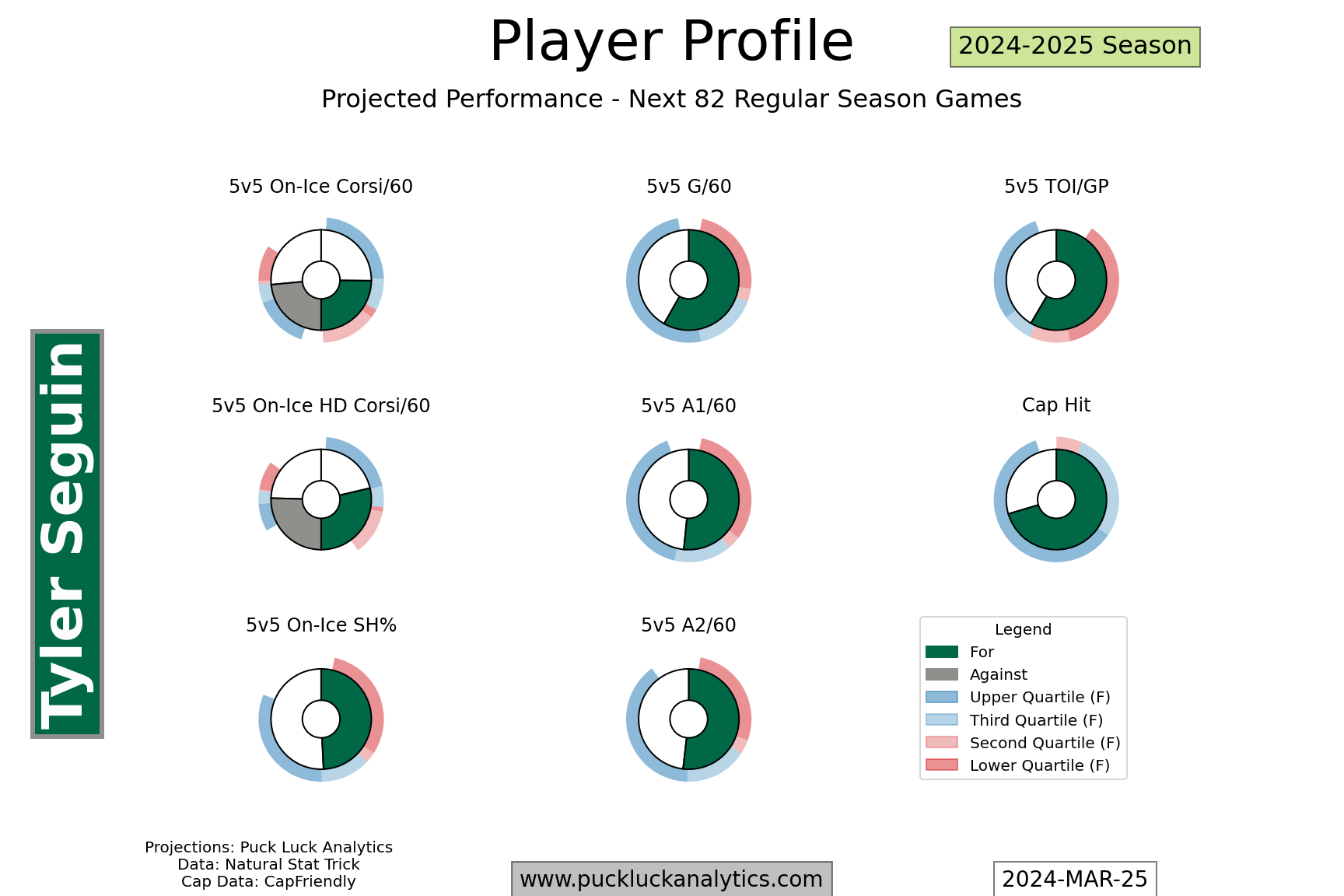
The Stars have more or less skipped over the next cohort. It’s boring but it’s precisely the idea behind alternating cohorts to create a regenerative roster in action. Instead of spending a large amount of future assets to build up this group as the Benn/Seguin group started to fade, the Stars focused on the future assets that make the next two groups.
The age 24-27 cohort is the home of the Stars current cornerstones: Jason Robertson, Roope Hintz and Miro Heiskanen. All three are dynamic players in their prime and they fit nicely as anchor talents to tie the Benn/Seguin group to the even younger cohort. Having a quality goaltender in Jake Oettinger in this group is a nice bonus.
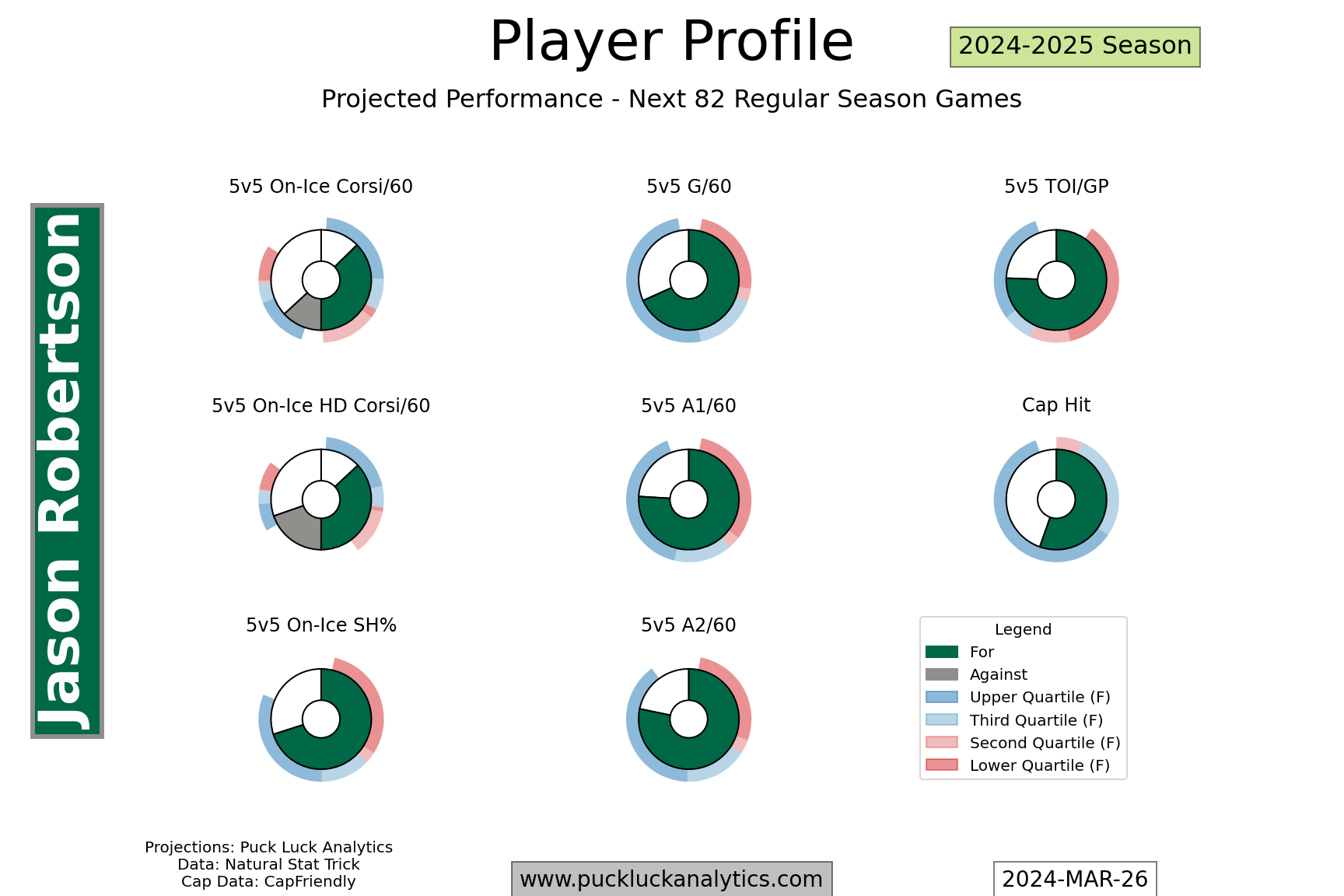
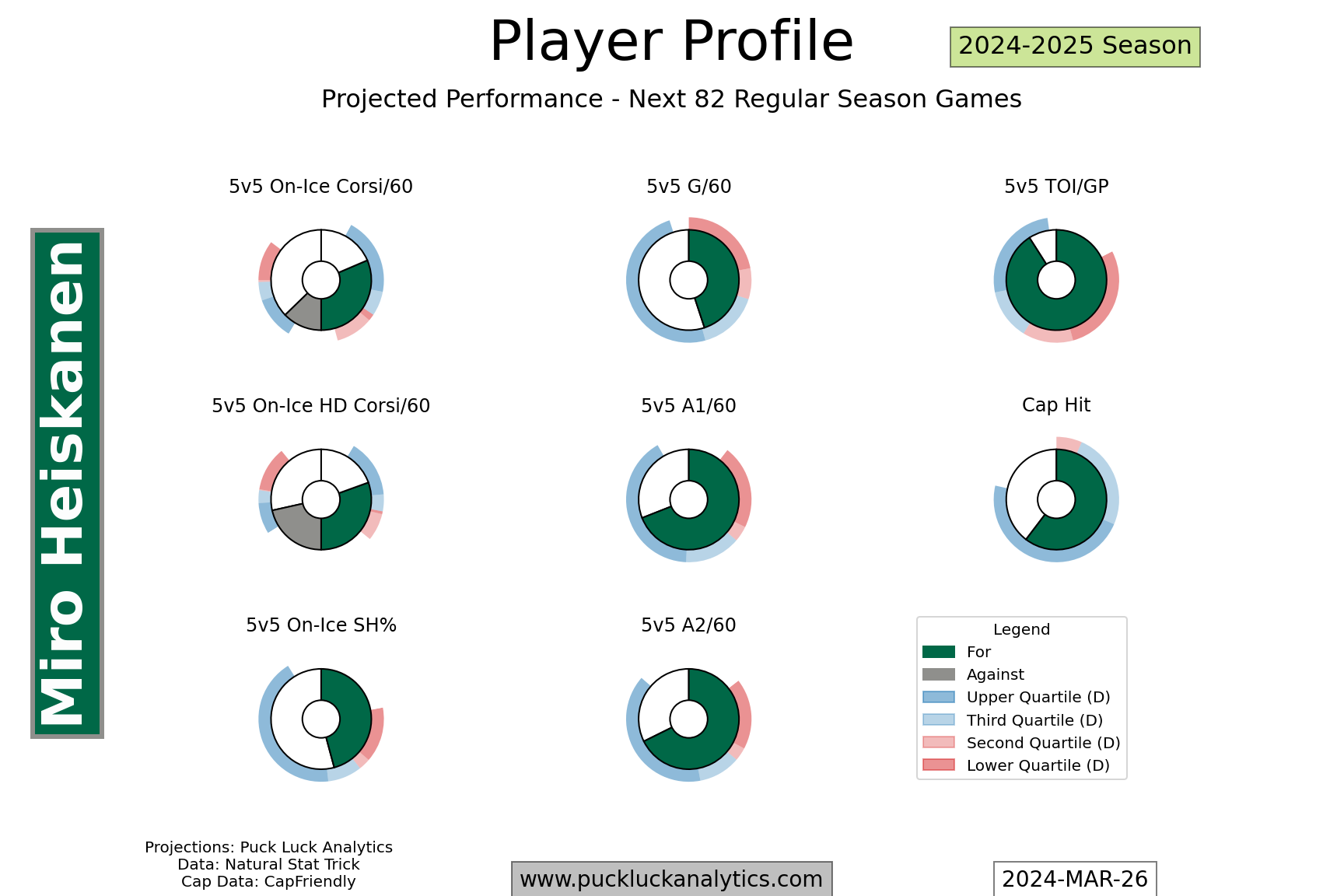
It’s what’s behind the Robertson/Heiskanen cohort that makes the Stars long term outlook really exciting. The age 20-23 cohort is pushing their way into the NHL and contributing to the Stars current contention hopes. They’re gaining valuable NHL experience alongside the remaining veterans from the Stars old guard and will eventually replace them. Wyatt Johnston and Thomas Harley have had a significant impact at the NHL level already and there’s more coming. Logan Stankoven and Mavrik Bourque were tearing up the AHL this season before Stankoven’s eventual callup.

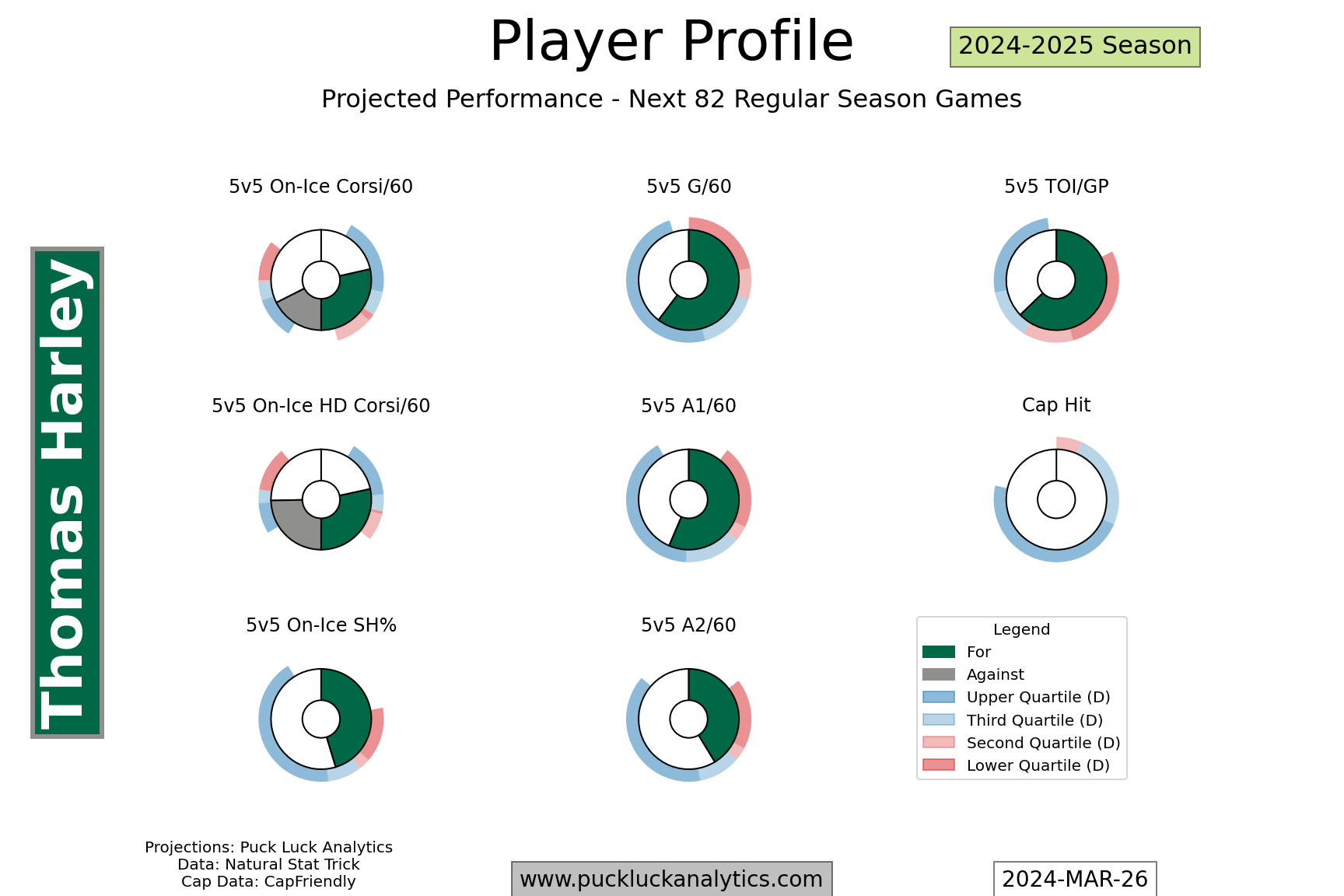
The Stars have been able to regenerate their roster with a short downturn after their 2020 Stanley Cup Final run and they look set to contend for a long time. Their upcoming draft picks should be on the table to add to the incoming group as well, since that next cohort is the another one they can skip.



